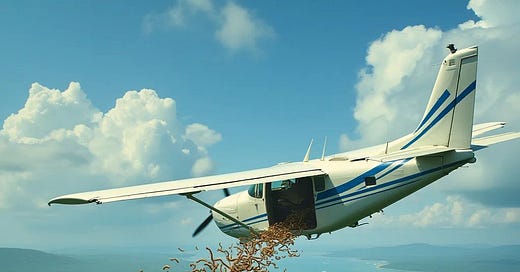In a fascinating blend of science, innovation, and international cooperation, the United States and Panama have embarked on a mission to protect North America from a tiny yet formidable enemy: the New World screwworm. This pest, known for its devastating impact on livestock and other warm-blooded animals, is being controlled through a unique method that might sound like science fiction but is very much a reality.
At the heart of this effort is the sterile insect technique, a groundbreaking approach that involves airdropping sterilized screwworm flies over the Panama-Colombia border. This method, developed through decades of research and collaboration, is proving to be a game-changer in pest control.
The New World screwworm is a parasitic fly that poses a significant threat because its larvae infest and consume the flesh of living warm-blooded animals, including livestock, pets, and even humans. This can lead to severe pain, infection, and often death for the host animal, resulting in substantial economic losses in the livestock industry. The process begins with the sterilization of male screwworm flies using x-rays during a specific stage of their pupal development. These sterilized males are then released into the wild, where they mate with females, who only mate once in their lifetime. The result? No viable offspring, leading to a gradual decline in the screwworm population.
In Pecora, Panama, a dedicated factory produces 20 million sterile screwworms each week. These flies are raised in controlled environments that mimic their natural habitat, fed a special diet, and sterilized using radioactive cobalt-60. They are then transported to the release site, where they are airdropped over the Panama-Colombia border using specially retrofitted planes, ensuring a wide dispersal and effective coverage. The Panama-Colombia border was strategically chosen because it is the narrowest point in the Central American isthmus, making it an ideal location to control and monitor the movement of screwworm populations, thereby creating a buffer zone that stops the northward migration of these pests and protects the livestock industries in North America.
This technique has a proven track record, having successfully eradicated screwworms from the United States and other parts of North America. The economic benefits are substantial, with farmers saving approximately a billion dollars annually in livestock losses. The program is a testament to the power of international cooperation. The United States and various Central American countries have entered into cost-sharing agreements to maintain and expand the eradication efforts, demonstrating a shared commitment to tackling this common threat.
The Great American Worm Wall is more than just a pest control program; it's a remarkable example of what's possible when science, innovation, and international collaboration come together. By combining aerial releases with ground inspections, and through the dedication of passionate scientists and cooperative governments, this initiative not only protects livestock and saves money but also serves as a model for addressing other agricultural and environmental challenges. As we continue to face global issues, the lessons learned from this program remind us of the power of working together towards a common goal.


